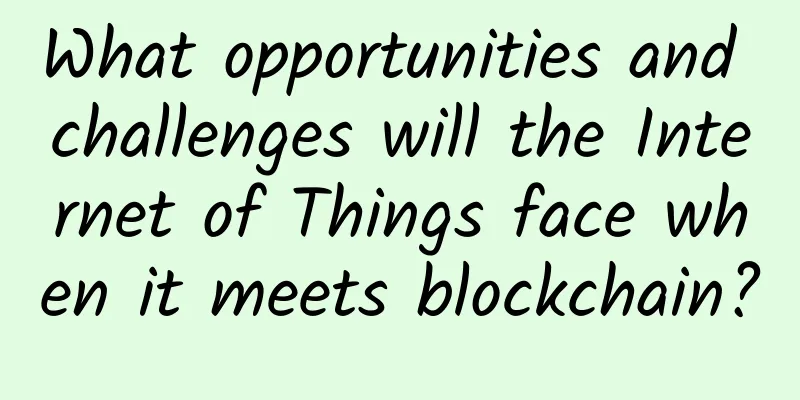6G: Everything you want to know is here!

|
2019 has become the first year of 5G. South Korea, Switzerland, the United States and many other countries have started commercial 5G in the first half of this year. China also issued 5G licenses in June, starting 5G operations one year ahead of schedule, and is expected to build the world's largest and most advanced 5G network. Although 5G has just started and it will take several years for complete network coverage, the industry can't wait to discuss the 6G era, which will be the next generation of network technology after 5G. However, it is still in the imagination stage and is generally recognized that it may not be available until ten years later.
So what changes will 6G bring? "In the 6G era, perhaps we will be able to access the Internet on airplanes without affecting flight safety. When mountaineers encounter danger while climbing, they can send location information and distress signals in real time without any delay. When sailing on the sea, the crew on board does not have to worry about losing contact with the land, as 6G can ensure their real-time communication." This was described by Wu Qihui, executive vice president of the School of Electronic Information Engineering at Nanjing University of Aeronautics and Astronautics. The University of Oulu in Finland also published a 6G white paper with more than 70 experts, introducing the network characteristics and technology trends of the 6G era. The white paper believes that similar to the previous mobile communication technology upgrades from 1G to 5G, most performance indicators of 6G will be improved by 10 to 100 times compared with 5G. The white paper gives several key indicators for measuring 6G technology: peak transmission speed reaches 100Gbps-1Tbps, while 5G is only 10Gpbs; indoor positioning accuracy is 10 cm, and outdoor positioning accuracy is 1 meter, which is 10 times higher than 5G; communication delay is 0.1 millisecond, which is one tenth of 5G; ultra-high reliability, with an interruption probability of less than one in a million; ultra-high density, with a density of more than 100 connected devices per cubic meter. In addition, 6G will use terahertz frequency band communication, which will greatly increase network capacity. In terms of coverage, 6G wireless networks are no longer limited to the ground, but will achieve seamless connection between ground, satellite and airborne networks. In terms of positioning accuracy, traditional GPS and cellular multi-point positioning have limited accuracy and it is difficult to achieve accurate deployment of indoor objects. 6G is sufficient to achieve high-precision positioning of IoT devices. At the same time, 6G will be deeply integrated with artificial intelligence and machine learning. Intelligent sensing, intelligent positioning, intelligent resource allocation, intelligent interface switching, etc. will become a reality, and the level of intelligence will be greatly improved. 5G has just been launched, why is 6G coming? The 5G vision of "information at your fingertips, everything at your fingertips" emphasizes information interaction and the connection of everything, and the objects of connection are concentrated in a limited space of 10km above the ground. Although 5G began to study and standardize the technical characteristics of non-terrestrial networks (NTN) in Rel-16 version, the satellite communication network and cellular network standards and technical systems involved in the NTN architecture are still independent of each other and need to be connected and interacted through special gateway devices. Its communication capabilities and efficiency are difficult to meet the "ubiquitous connection" needs ten years later. In order to meet the future "ubiquitous connection" needs, 6G needs to introduce an integrated network of air, space, land and sea. This network will be an organic whole, that is, it needs a unified standard protocol architecture and technical system to truly realize the "ubiquitous connection" of air, space, land and sea. In addition, 5G's massive machine type communications (mMTC) feature emphasizes the number of connections, but does not require real-time performance; the ultra-reliable low latency feature (uRLLC) emphasizes reliability and real-time performance, but has no requirements for the number of connections and throughput, and is achieved at the expense of reducing spectrum efficiency and the number of connections. The 6G vision of "everything at your fingertips" requires massive connections, reliability, real-time performance, and throughput requirements at the same time. Therefore, although some of the basic concepts covered by the 6G vision have already been involved in 5G, the 6G vision has set higher goals to meet the needs of new scenarios in the future. From the perspective of commercial and social drivers, 5G is driven by consumers’ growing demand for data traffic and the productivity needs of vertical industries. It is essentially driven by mobile network operators. 6G drivers include business and society. Social factors include social needs in political, economic, social, technological, legal and environmental aspects to further promote the inclusiveness and fairness of the digital society, for example, to enable the world's poor, vulnerable groups and remote rural residents to have equal access to education, health care and other services. Compared with 5G, 6G is more inclusive and extensible, so the participants of 6G will not only be traditional operators, but also a new ecosystem will be generated outside of traditional operators. For example, as the frequency bands are introduced higher and higher, the network is becoming more and more dense, and local networks for vertical markets will become more and more common. These local networks will be deployed by different stakeholders, thus driving the "local operator" model and spawning a new ecosystem. What scenarios will 6G disrupt? 5G technology has always been associated with trade-offs such as latency, power consumption, deployment cost, hardware complexity, throughput, end-to-end reliability, and communication resilience. However, the market by 2030 and beyond will introduce new applications with more stringent requirements in terms of ultra-high reliability, capacity, energy efficiency, and low latency, which may saturate the capacity of traditional wireless system technologies. Although applications such as massive communications, augmented reality (AR) and virtual reality (VR) have been discussed in 5G, they are unlikely to be part of future 5G deployments due to technical limitations or insufficient market maturity. The figure above shows the requirements for low latency, throughput, and reliability for different applications. From the perspective of people, people and things, and things and things, 6G will be used in space communication, intelligent interaction, holography, tactile Internet, emotional and tactile communication, virtual assistants, multi-sensory mixed reality, collaboration between machines, body domain network, fully automatic transportation and other scenarios in the future. (For specific use cases, please refer to the article "The "Yuba" iPhone 11 does not support 5G, but 6G is ready!") 1. XR Experience XR experiences will likely be delivered by lightweight glasses that project images onto the eyes at high resolution, frame rate, and dynamic range, and by other organs through headsets and haptic interfaces. 2. Remote communication
Remote holographic technology uses real-time capture, transmission and rendering technology to transmit 3D holographic images of people in different places to the same location, allowing everyone to communicate as if they were sitting face to face. 3. Connected and autonomous vehicles
Each vehicle in the future network will be equipped with many sensors, including cameras, laser scanners, THz arrays that may be used for 3D imaging, odometers, and inertial measurement units. Algorithms must quickly fuse data from multiple sources and determine the presence of people, animals, or buildings in the surrounding area to quickly control the vehicle to avoid collisions or injuries. Three key technologies of 6G At the "2018 Mobile World Congress North America", Jessica Rosenworcel, as the first commissioner of the Federal Communications Commission (FCC) to publicly discuss 6G wireless services, proposed three categories of key technologies for 6G, involving 6G spectrum, how to achieve 6G wireless "ultra-large capacity", and how to innovate the use of 6G spectrum. 1. 6G will enter the terahertz frequency band As the number of users and smart devices increases, the limited spectrum bandwidth needs to serve more terminals, which will seriously reduce the service quality of each terminal. A feasible way to solve this problem is to develop new communication frequency bands and expand the communication bandwidth. Just like a road, no matter how wide it is, the number of vehicles it can accommodate is limited. When the road is not enough, vehicles will be blocked and unable to travel smoothly, and then it is necessary to consider developing another road. At present, the main 4G frequency bands of my country's three major operators are located in a part of the frequency band between 1.8GHz and 2.7GHz, while the mainstream frequency band of 5G defined by the International Telecommunication Standards Organization is 3GHz-6GHz, which belongs to the millimeter wave frequency band. When it comes to 6G, it will enter the higher frequency terahertz frequency band of 100GHz-10THz. In the 6G era, the network will be "densified", and we will be surrounded by small base stations. In the 5G era, it is said that there is only one small base station every 200 meters, and there will be more in 6G. There are many factors that affect the coverage of base stations, such as the frequency of the signal, the transmission power of the base station, the height of the base station, etc. In terms of the frequency of the signal, the higher the frequency, the shorter the wavelength, so the diffraction ability of the signal is worse, and the loss is greater. And this loss will increase with the increase of transmission distance, and the range that the base station can cover will decrease accordingly. Note: Diffraction is also called diffraction. When an electromagnetic wave encounters an obstacle during propagation and the size of the obstacle is close to the wavelength of the electromagnetic wave, the electromagnetic wave can diffract from the edge of the object. In addition, since the frequency of 6G signals is at the terahertz level, this frequency has entered the spectrum of molecular rotation energy levels and is easily absorbed by water molecules in the air. Therefore, the distance it propagates in space is not as far as that of 5G signals. 6G requires more base stations to "relay".
Note: Image source: NetEase News I am worried that 5G base stations are already very dense, what will the density of 6G be? Will there be more radiation problems? 2. Spatial multiplexing technology When the signal frequency exceeds 10GHz, diffraction is no longer the main propagation mode. For non-line-of-sight transmission links, reflection and scattering are the main signal propagation modes. At the same time, the higher the frequency, the greater the propagation loss, and the closer the coverage distance, the weaker the diffraction ability. These factors will greatly increase the difficulty of signal coverage. This is true not only for 6G, but also for 5G in the millimeter wave band. 5G currently uses two key technologies, Massive MIMO and beamforming, to solve such problems. Massive MIMO mainly increases the number of transmitting antennas and receiving antennas, that is, designs a multi-antenna array to compensate for the loss on the high-frequency path. Spatial multiplexing technology is to increase the amount of data transmission under the configuration of MIMO multiple antennas. At the transmitting end, the high-rate data stream is divided into multiple lower-rate sub-data streams, and different sub-data streams are transmitted on the same frequency band on different transmitting antennas. Because the spatial sub-channels between the antenna arrays at the transmitting end and the receiving end are different enough, the receiver can distinguish these parallel sub-data streams without paying additional frequency or time resources. MIMO's multi-antenna array will focus most of the transmission energy in a very narrow area. Because the area is narrow, there will be less interference between different beams. However, since the narrow beams emitted by the base station are not 360-degree omnidirectional, it cannot be guaranteed that the beams can cover users in any direction around the base station. In this case, beamforming technology can be used. Beamforming is to manage and control the beams through complex algorithms, making them like "spotlights". These "spotlights" can find where mobile phones are gathered, and then provide more focused signal coverage to them. 5G uses MIMO technology to improve spectrum utilization. 6G is located in a higher frequency band, and the further development of MIMO in the future is likely to become a key technical support for 6G. 3. Dynamic spectrum sharing + blockchain Operators in Europe and the United States mainly acquire spectrum through spectrum auctions (spectrum auctions refer to authorized users planning a certain frequency band, holding public auctions, and transferring the right to use the frequency band to the highest bidder through public bidding.) However, the spectrum auction allocation method is unable to meet the demand for "efficient use of spectrum resources" in the 6G era, because it has problems such as authorized users monopolizing frequency bands, resulting in idle spectrum and insufficient utilization. In order to rationally allocate spectrum resources and make them fully and efficiently used, the US FCC promoted dynamic spectrum sharing in 2015 and launched CBRS (common wireless broadband service) at 3.5GHz. Different types of wireless traffic are dynamically managed through a centralized spectrum access database system to improve spectrum utilization efficiency. Simply put, if a user does not use it, other users can access it, just like sharing bicycles. This can not only effectively reduce resource waste, but also reduce congestion problems. Currently, the CBRS Alliance version 3 will solve the problem of using 3.5 GHz band shared spectrum to support 5G deployment. Recently, US operator Verizon has completed DSS 5G data calls with Qualcomm and Ericsson; AT&T began testing CBRS equipment that supports 5G in September 2018. However, in the 6G era, dynamic spectrum sharing will obviously continue to develop on the original basis. CBRS supports spectrum sharing access through a centralized database. If the system can explore the use of blockchain as a low-cost alternative to dynamic spectrum sharing technology based on blockchain technology that uses a distributed database, it can not only reduce the management cost of the dynamic spectrum access system and improve spectrum efficiency, but also further increase the access level and the number of access users. The application of blockchain in 6G, using a "decentralized" distributed ledger to record various wireless access information, will further stimulate new technological innovations and even "change the way 6G uses wireless spectrum in the future." In addition to the above three technologies, 6G requires many other technologies. Some experts believe that in order to increase bandwidth, we must rely on the development of chip technology and radio frequency circuit technology. At the same time, some experts pointed out that the heat dissipation problem of terahertz chips also needs to be solved urgently. Nowadays, chips are getting smaller and smaller, and the increase in transmission power will make the chips more likely to "heat up", so micro-heat dissipation technology also needs to be improved urgently. In addition, in the 6G era, we may need new battery technologies such as solid-state batteries and graphene batteries; what kind of wireless security solutions should be adopted to enable related communication systems to cope with attacks launched by quantum computers, etc., including the various precautions raised in this white paper, all require us to continue exploring to improve 6G. 6G Research Progress 1. 6G war is brewing again China: At present, the domestic IMT2020 new technology working group has begun to carry out overall research on 6G. Among the key projects of the Ministry of Science and Technology in 2018-2019, 11 are related to 6G. The China Academy of Information and Communications Technology and other units are responsible for the "Research on the Vision and Demand of Post-5G/6G Systems". On April 26, 2019, the Millimeter Wave Terahertz Industry Development Alliance was established in Beijing. The alliance was jointly established by the China Academy of Information and Communications Technology and related enterprises and experts from the industry, scientific research institutes, etc., aiming to accelerate the development of my country's millimeter wave terahertz industry and enhance my country's technical level and industrialization capabilities in the field of communications. At the same time, the Future Mobile Communications Forum ("Future Forum") jointly supported by the National Development and Reform Commission, the Ministry of Industry and Information Technology, and the Ministry of Science and Technology has released three 6G-related white papers such as "ApeekBeyond5G". Chinese operators are also deeply involved in the FGNET2030 research initiated by ITU-T. On November 6, 2019, the 6G technology research and development work launch meeting was held, and the National 6G Technology Research and Development Promotion Working Group and the Overall Expert Group were formally established. United States: The development of 6G is mainly promoted by the government-funded universities, with a focus on the development of projects that "integrate terahertz communications and sensing." Recently, the Federal Communications Commission of the United States has officially voted to open terahertz magnetic waves to 6G technology trials. Japan: The research work on 6G is mainly carried out by NTT DoCoMo, the largest telecommunications operator in Japan, focusing on terahertz, orbital angular momentum and other areas. South Korea: Samsung is mainly responsible for the pre-research of 6G technology. According to the Korea Asia Daily on June 4, Samsung Electronics has established a new generation of communication research center, which consists of a 6G research group and other leading solution groups and a standard research group. EU: In 2017, the EU established the multinational TERRANOVA program, which includes Germany, Greece, Finland, Portugal, and the United Kingdom, and explicitly proposed the development of ultra-high-speed terahertz innovative wireless communication technology. The European Telecommunications Standards Institute (ETSI) has also gradually launched research projects on 6G basic technologies and solicited consultations on other R&D directions. Cross-regional cooperation: Recently, Sony, Intel and NTT (Nippon Telephone and Telegraph Corporation) announced that they will cooperate to develop 6G mobile network technology. 2. Domestic 6G projects On October 26, 2018, the Ministry of Science and Technology released the 2018 annual project of the key project "Broadband Communications and New Networks". The implementation period of the project is 5 years (2018-2022). The overall goal is to "make my country a global leader in the research and development of B5G wireless mobile communication technology and standards; achieve a number of breakthrough results in the field of 'future wireless mobile communications' and master independent intellectual property rights". There are 5 projects involving the research and development of B5G/6G wireless mobile communication technology and standards:
3. 6G players include giants in various fields: operators, academia, and industry China Mobile's second technology innovation conference was held on May 13. Zhang Feng, chief engineer of the Ministry of Industry and Information Technology, made three suggestions, one of which involved "laying out future 6G basic research and helping to break through key core technologies." On September 17, China Mobile Research Institute held the first meeting of the "Imagine the Future" 6G series of seminars, providing an important reference for the industry to find the direction of 6G research. During the 2019 China Mobile Global Partner Conference, China Mobile Research Institute and the industry jointly released the "2030+ Vision and Demand Report", which is China Mobile's first 6G report. Feng Yi, head of the 5G Innovation Center of China Unicom Network Research Institute, said at a terahertz communication technology seminar that the Institute has begun research on 5G and 6G communication technologies, and China Unicom's terahertz communication promotion plan will be divided into three steps. Feng Yi revealed that China Unicom will also take the lead in establishing a millimeter wave terahertz joint innovation center, unite more than 20 member units, formulate more than 10 terahertz communication standards, create more than 3 terahertz demonstration projects (Winter Olympics), and establish more than 1 terahertz communication open laboratory. In December 2018, Southeast University released the top ten scientific and technological issues, one of which was "Preliminary Research on 6G Mobile Communications", which included six research directions:
According to Canadian media reports in mid-August, Huawei has begun developing 6G technology in its R&D laboratory in Ottawa, Canada. The laboratory will help lead Huawei's global 6G development. Song Zhang, vice president of Huawei Canada's research strategy and partnerships, said: 5G is very new, and 'developing 6G' is part of the so-called '5G evolution'. ZTE has invested in and established a team of about 40-50 people to sort out work in four areas: "vision", "demand" and "important indicators and key technologies" to promote 6G. It will systematically study 6G network architecture, new spectrum, new air interface, and the combination with artificial intelligence, blockchain and other technologies, and also pay attention to and deploy in cutting-edge basic materials, devices and other fields related to 6G. It took 30 years for mobile communication technology to evolve from analog technology to the second generation of mobile communication technology (2G) marked by GSM, 15 years for the evolution from 2G to 3G, and 5 years for the launch from 3G to 4G. The speed of technology upgrade is getting faster and faster, and the time for each generation of communication technology to become the commercial mainstream is getting shorter and shorter. Now that 6G is on the way, perhaps its popularity will come even faster! |
>>: Want to handle tens of millions of traffic? You should do this!
Recommend
Solution to Failed to start LSB: Bring up/down networking when starting CentOS
I encountered this problem on a physical server. ...
WiFi 7 is coming, but is it really reliable?
There is no fastest, only faster. WIFI6 has just ...
China successfully launches the world's first quantum satellite "Micius"
At 01:40 on August 16, China successfully launche...
5G+AI: Will it produce the effect of 1+1>2 in the future?
Since the information industrial revolution, peop...
Huawei releases four new smart security products to usher in a new era of AI and win-win intelligence
[51CTO.com original article] Recently, Huawei'...
Application of multimodal algorithms in video understanding
1. Overview At present, video classification algo...
Huawei's Intelligent IP Network Helps IP Bearer Network Enter the Full-Service Intelligent Era
[Shenzhen, May 19, 2020] Today, during Huawei'...
Foreign media: Global investment and deployment in 5G will accelerate in 2020
Foreign media reported that in 2020, global inves...
IPv6 has a "red" start, and Internet giants are showing their talents!
After "getting up early and arriving late&qu...
Four questions about 5G: Internet speed is 100 times faster and everything is connected
Since last year, there has been an increasing amo...
What are the differences between HTTP and HTTPS besides security?
HTTP and HTTPS are two common network protocols, ...
DogYun National Day Promotion: 30% off on Dynamic Cloud, 20% off on Classic Cloud, 100 yuan/month discount on Dedicated Server, 100 yuan free for every 100 yuan you top up
DogYun is a Chinese hosting company established i...
New space age opens opportunities for edge computing
Satellite communications are starting to become f...
Can high-speed fiber optics connect smart factories?
In order to keep factories moving forward, the in...
Have you used "Online Documents"? It allows multiple people to work together and synchronize content in real time. It's so efficient!
Have you ever encountered a situation at work whe...

![[cyberMonday] DediPath: VPS starts at $10 per year, dedicated server starts at $108/three months, 1Gbps unlimited traffic, multiple data centers in Los Angeles and other places](/upload/images/67cac00425403.webp)







